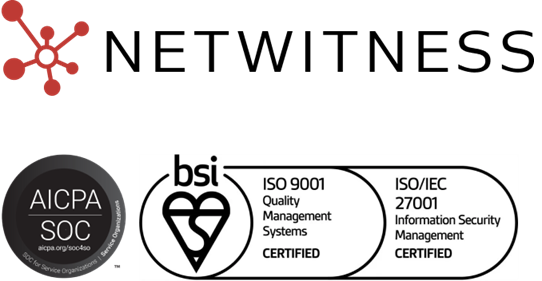Quality of Service (QoS) is a comprehensive set of technologies and methodologies that manage network traffic to guarantee reliable performance for high-priority applications and data flows under conditions of limited network capacity. QoS networking mechanisms provide differentiated handling of network packets by controlling bandwidth allocation, reducing latency, and minimizing jitter to ensure critical applications receive the resources they need.
Understanding what is quality of service and implementing effective network quality of service policies enables organizations to optimize network performance, support real-time communications, and deliver consistent user experiences across diverse application types.
What Is Quality of Service?
Quality of service in networking involves implementing traffic management techniques that prioritize and allocate network resources based on application requirements and business needs. Rather than treating all network traffic equally, QoS mechanisms classify, queue, and manage packets to ensure bandwidth-intensive or latency-sensitive applications like voice over IP, video conferencing, and real-time collaboration tools receive priority over less time-critical traffic.
Modern QoS networking solutions measure key performance metrics including bandwidth, throughput, latency, and jitter to make intelligent traffic management decisions. Dynamic quality of service capabilities adapt to changing network conditions in real time, automatically adjusting priorities and resource allocations to maintain optimal network performance across varying traffic loads.
Synonyms
- QoS Networking
- Network Quality of Service
- Experience Quality (EQ)
- Customer Experience (CX)
Why Quality of Service Matters
Failing to implement network quality of service can result in degraded application performance, poor user experiences, compromised real-time communications, and reduced business productivity. Key reasons quality of service QoS is essential include:
- Application Performance: Ensuring critical business applications receive necessary bandwidth and low latency for optimal functionality and user satisfaction.
- Real-Time Communications: Supporting voice and video applications that require consistent, low-latency delivery to prevent disruptions and maintain quality.
- Network Efficiency: Maximizing utilization of existing network infrastructure without requiring expensive bandwidth upgrades through intelligent traffic management.
- User Experience: Delivering consistent, reliable service quality that meets expectations for both internal users and external customers.
Effectively implementing QoS in networking ensures organizations can support diverse application types simultaneously while maintaining performance standards for business-critical services.
How Quality of Service Works
Network quality of service implementations typically follow a structured traffic management process:
- Traffic Classification: Identifying and categorizing network packets based on application type, source, destination, or other criteria using packet header inspection.
- Traffic Marking: Applying identifiers like Differentiated Services Code Point (DSCP) values to classified packets for consistent handling across network infrastructure.
- Queue Management: Storing packets in differentiated queues based on priority classifications, with higher-priority traffic processed before lower-priority flows.
- Bandwidth Allocation: Assigning specific bandwidth guarantees or limits to different traffic classes to ensure critical applications receive necessary resources.
- Congestion Management: Implementing traffic shaping and scheduling algorithms to prevent network congestion and maintain performance during high-utilization periods.
Types of QoS Mechanisms
- Priority Queuing: Assigning strict priority levels to different traffic classes, ensuring highest-priority packets are always processed first.
- Bandwidth Management: Controlling traffic flow rates through shaping and policing techniques to optimize performance and prevent congestion.
- Dynamic Quality of Service: Adaptive systems that automatically adjust priorities and resource allocations based on real-time network conditions and application demands.
- Differentiated Services (DiffServ): Standards-based approach using DSCP markings to ensure consistent QoS policy enforcement across multiple network devices.
Best Practices for Quality of Service Implementation
- Assess Network Requirements: Conduct thorough analysis of current network performance, traffic patterns, and application requirements before designing QoS policies.
- Define Business Priorities: Work with leadership to identify truly critical applications that warrant priority treatment over less essential traffic.
- Classify Traffic Strategically: Focus on categorizing latency-sensitive applications like voice and video while avoiding excessive classification complexity.
- Monitor Continuously: Implement ongoing network visibility and performance monitoring to validate QoS effectiveness and identify optimization opportunities.
- Adapt to Changes: Treat QoS as an iterative process requiring regular policy adjustments as business needs and network conditions evolve.
Related Terms & Synonyms
- Quality of Service QoS: Comprehensive term encompassing all technologies and practices for managing network traffic to ensure performance standards.
- QoS Networking: Application of quality of service principles and technologies specifically within network infrastructure and communications.
- Network Quality of Service: Implementation of QoS mechanisms to optimize performance, reliability, and efficiency of network operations.
People Also Ask
1. What is quality of service in networking?
Quality of service in networking is the practice of managing network traffic through classification, prioritization, and bandwidth allocation to ensure critical applications receive the resources they need while maintaining optimal performance across all network services.
2. How to implement QoS in a network?
Implement QoS by first assessing network requirements and identifying critical applications, then classifying traffic into priority classes, configuring queuing and bandwidth management policies, marking packets for consistent handling, and continuously monitoring performance to adjust policies as needed.
3. What is dynamic QoS?
Dynamic QoS is an adaptive traffic management approach that automatically adjusts priorities, bandwidth allocations, and traffic policies in real time based on current network conditions, application demands, and congestion levels without requiring manual intervention.



